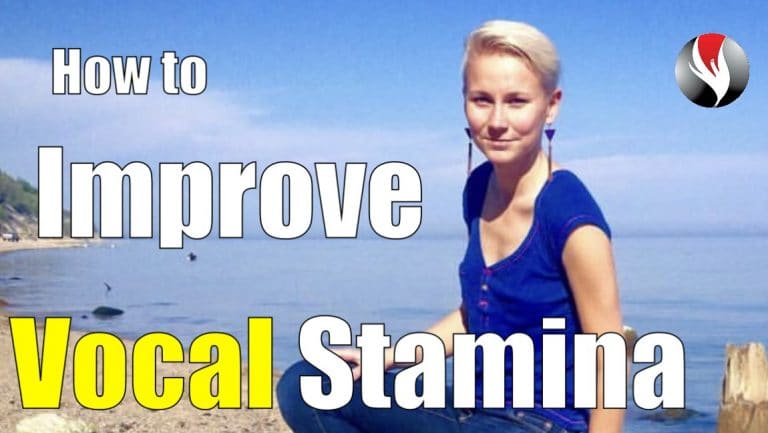What Is Mixed Voice vs Head Voice?
What is mixed voice vs head voice? As you sing higher from your low to high notes, your voice passes through the passagio or bridge. The bridge is where you should be singing in a mixed voice. As your notes go higher above the bridge, you should be singing in your head voice.
What is mixed voice and what does it feel like? How can you tell when you’re singing in mixed voice vs head voice? Great singers know the difference. Watch!
Hi I’m Chuck Gilmore, International Vocal Coach and Founder of Power To Sing.
Each week I teach you lessons in vocal technique so you can build a powerful and confident singing voice. If you haven’t subscribed yet, please subscribe to my channel, Power To Sing. Be sure to click on the bell so you’re notified when I post special videos for you each week!
In this video I’ll define and demonstrate mixed voice vs head voice using my own subjective experiences as a singer.
Where in Your Voice is Mixed Voice?
Here are two opinions on mixed voice.
#1. The first is that mixed voice occurs only in the vocal bridges. For example, in the first bridge, you mix the chest and head voice. In subsequent bridges you sing with a mix of the lower area you’re coming from and the next higher area you’re going to.
After the first bridge, there’s another one about every tritone. There are six bridges in the women’s voices and three in men’s voices. Whenever you are in a bridge, you should be singing with a mixed voice. With this view of mixed voice, outside the bridges, there’s no mix.
The baritone-tenor bridge is at the E4, F, F4#. The Mezzo, and Soprano Bridge is at the A4, B, Bb, C5, C#5. Contraltos bridge where the tenors bridge. Basso’s bridge an octave below the Sopranos.
#2. In contrast, others believe that mix can be everywhere in the voice. So, whether in chest voice or areas outside the bridges, mixed voice is possible. Every note sung is mixed…or should be.
What does Mixed Voice Sound Like? 10 Demonstrations
I’ve come to believe that mixed voice is possible everywhere. Here’s my mixed voice at the baritone-tenor first bridge. [Demo] If mixed voice was only in the bridges it might sound like this. [Demo singing in chest until the E4].
But we don’t do that. We often start to mix on the approach to the bridges. [Demo] Therefore I am mixing outside the bridge.
Now I’ll bring mix down and sing what’s usually chest notes in mix. I’ll be mixing outside the bridge. [Demo].
Here’s a mix deeper in my lower chest. [Demo] Now I’ll demonstrate the same notes without a mix. [Demo] Now with a mix. [Demo]
Can you hear the difference? I lose the mixed voice when I eliminate the vertical vibration. I do that by jamming the tone into a flat straight tone. Notice the absence of the vertical vibrations? [Demo]
Let me know in the comments section below if you can hear a difference.
If you are in a mix outside the bridges, I believe you’re mixing because you’re including the vertical vibration..that sense of the upper resonances. This can occur everywhere in your range.
It’s a mix of the note you’re singing, with a vertical vibration or overtone. You’re maintaining the vertical. I think this can be termed a mixed voice.
Although you can maintain the vertical resonance everywhere in your voice, the blend of chest and head voice in the first bridge teaches you more about mixed voice and what it feels like than anywhere else in your voice.
There’s a distinct difference between your chest voice and your mix of chest and head voice in the bridge.
This is not mixed voice:
[Demo Pulled Chest, Break into Falsetto, over imposed larynx, breathy high larynx]
This is a mixed voice in the baritone-tenor first bridge. [Demo on Ah]
What is Head Voice? 4 Demonstrations
First, this is not head voice. [Demo breaking into falsetto] Did you hear the tone disconnect? That’s called a false voice…or falsetto. It will not blend or mix into the chest voice. Therefore, you can’t sing with a mixed voice if you are in falsetto. There’s no possibility of mixing falsetto with chest voice.
As you sing in your bridge with mixed voice and continue into head voice nothing changes immediately. [Demo]
Some chest overtones drop off and more head overtones kick in. Gradually the vibrations move further into your head until chest vibrations are virtually gone. [Demo]
There remains a sense of connection to chest voice because you haven’t broken into falsetto.
The tone becomes headieras you sing higher. There’s an increased feeling of release, less vocal cord edge and more air passing through the vocal cords. The tone remains vibrant and strong. [Demo]
Men are in head voice at the G4. Women have a larger middle area and a second bridge at E5,F,F#5. Women enter into head voice on the G5.
Mixed Voice vs Head Voice
Differences – 11 Demonstrations
In the first bridge, mixed voice has both chest and head vibrations. [Demo] In contrast, head voice has all head vibrations virtually no chest overtones. [Demo A4]
Chest tones in mixed voice in the first bridge are dominant in the lower pitches, and the head tones are less dominant. As the pitch ascends, the chest vibrations damp or drop out of the mixed voice, and the head voice vibrations come in and gain dominance at the top of the bridge. [Demo]
By contrast, in head voice, head tones are always dominant. There is no decrease of one and increase of the other. [Demo 5 tone in HV]
For men, head voice and mixed voice feel the same at the vocal cord level when singing in the first bridge and into head voice. [Demo]
After 2-3 notes above the bridge, the condition of the cord structure doesn’t change except they relax slightly as the air flow decreases. The head voice gains intensity because the pitch is higher. [Demo] The mixed voice in the first bridge lacks that intensity because of the lower pitches. [Demo]
Less airflow is required to produce the head voice vs mix voice. [Demo] Mix voice requires more air flow because the vocal cords are shorter and thicker. [Demo]
You can bring mixed voice down and it will blend easily into chest voice. [Demo] You can’t bring head voice down into chest voice without directing it into chest. If you let it “float” above chest it will disconnect the tone before it gets back to chest. [Demo]
Similarities – 4 Demonstrations
Both mixed voice and head voice feel very similar in the cord compression required to produce a similar loudness. [Demo Octave jump on mum]]
Both mixed voice in the first bridge and head voice can be loud, intense and powerful. [Demo F# and Bb4 No]
Both mixed voice in the first bridge and head voice can be quiet, soothing and gentle. [Demo E4 and Ab4 God on high Bring him home with crescendo-decrescendo-crescendo]
Both mixed voice and head voice can spread and splat vowels and cause strain and tension. [Demo Eb4 and G4 on oo to oh]
6 Ways this Make You a Great Singer?
#1. Understanding the mixed voice vs head voice gives you an elevated awareness of your singing voice. You begin to feel the mixed voice in your first bridge and the release of head voice. [5 tone up F4 to C5 on oh]
#2. Your control and confidence in your mixed and head voice increases.
#3. You can generate a strong, powerful head voice with less air and more release.
#4. You can lean into your mixed voice with more air and generate more power so it sounds like chest.
#5. Mastering mixed voice will enable you to crescendo-decrescendo-crescendo in mixed or head voice.
#6. With an intimate knowledge of your voice, you become a great singer and entertainer.
Let me know in the comments section below other differences you’ve noticed between your mixed voice and head voice.
Here’s a fast way to experience mixed voice and head voice. You do exercises for your vocal type. Your vocal type is not whether you’re soprano, alto, tenor or bass.
Your vocal type describes what your voice tends to do as you sing higher. For example, do you tend to strain, or break or go into falsetto, go breathy, or maybe mix?
To discover your vocal type, download this free PDF entitled “Get Your Vocal Type”. You can get it here, or in the description area below this YouTube video.
This PDF contains links to a vocal test. Take the test and get your vocal type. Then watch the videos about your vocal type and download the exercises for your vocal type. On this PDF, you’ll receive links to more powerful vocal cord exercises that will help you get into mix and head voice and experience the benefits of both.
IF YOU LIKED THIS VIDEO, PLEASE GIVE IT A THUMBS UP, SUBSCRIBE, AND SHARE IT WITH A FRIEND.
Also, to join a community of singers just like you, I invite you to join my Facebook page, Power To Sing, where I share up to date singing advice to help you succeed with your voice.
In addition, be sure to join me on Twitter and Instagram @powertosing.
I’m Chuck Gilmore with Power to Sing. You can sing higher with beauty, confidence and power. I’ll see you inside the next video.








Responses